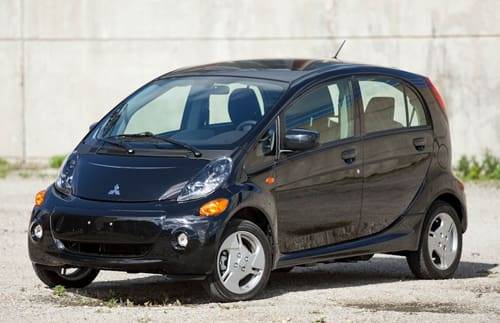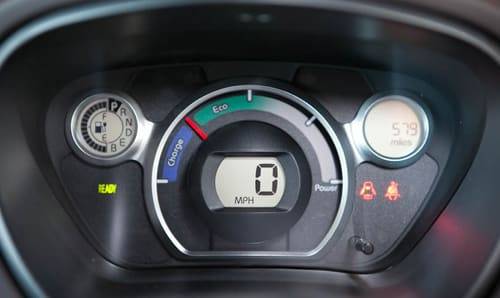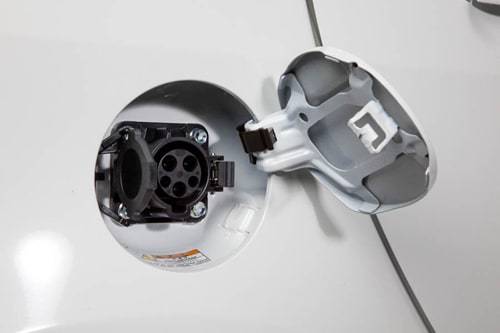2012 Mitsubishi i Estimates Range Better Than Nissan Leaf


The i, also known as the i-MiEV, is the new most affordable electric vehicle in the U.S., priced at $29,125 before incentives. We expected it to stumble, as the Leaf does, over the many variables an EV faces in trying to predict its range. We were wrong.

Using the same formula we developed for the Leaf, we analyzed all the trips we took in the i over the course of a week, comparing the actual miles traveled with the projected range at the beginning and end of the trip. Some trips were longer than others, and some started with a full battery while others didn’t. We did not run the battery all the way out.
To get the accuracy percentage, we subtract the number of miles driven on a trip from the EV’s initial predicted range, and then we divide that number into the miles of predicted range remaining at the end of the trip. Percentages below 100 mean the car overestimated its range for that trip, and percentages above 100 mean the car went farther than predicted.
The accuracy for the Mitsubishi averaged out to 100.3%. The Leaf’s accuracy was 86% over the course of a month in October 2011.
To be clear, there are always deviations among the trips. The best individual “score” for the Mitsubishi was 102%, meaning for that trip that it traveled slightly farther than expected given the range estimator’s starting projection. The car’s greatest overestimation for a unique trip was 147%, and its worst accuracy was 62%.
Because the weather is milder now than it was in October, we thought it might be skewing the results in the Mitsubishi’s favor, so we calculated the Leaf’s range error for the same week in April we drove the i. It averaged 84%, not far from its one-month accuracy and definitely inferior to the i.

We had wondered if our Chevrolet Volt’s accuracy (typically close to 100%) came courtesy of its elaborate thermal battery management. Our brief test of the i suggests that it’s not necessary. (Though the Mitsubishi we tested had an optional battery-warming feature, it operates only when temperatures dip well below zero.)
Following previous posts, EV advocates have made several assertions — among them that gas-powered cars don’t estimate their range accurately, either, and that it’s difficult for an electric car to predict and calculate all the variables and estimate range reliably.
Both points are absolutely true. However, the stakes are low in a petroleum-powered car with a range of hundreds of miles and the opportunity for a refill typically just a few miles away, if that. As for the complexity of range estimation, we understand fully. But making excuses for the technology won’t make it attractive to consumers. Battery-electric cars come with limited range and the accompanying range anxiety to begin with. Add uncertainty to the mix, and the anxiety easily doubles.
Thankfully, the i and Volt instill more confidence than the Leaf has.

Former Executive Editor Joe Wiesenfelder, a Cars.com launch veteran, led the car evaluation effort. He owns a 1984 Mercedes 300D and a 2002 Mazda Miata SE.
Featured stories

15-Year Car Loans Aren’t a Thing, But Americans Are Getting More Comfortable With Long Loan Terms

2025 Kia Telluride Review: Rougher Roads Ahead



